The Dutch Shepherd dog is a highly intelligent and active breed that requires proper training to become a well-behaved and obedient companion. As with any dog, training should start from a young age and be consistent and positive. In this article, we will provide some tips and guidelines on how to train a Dutch Shepherd dog.
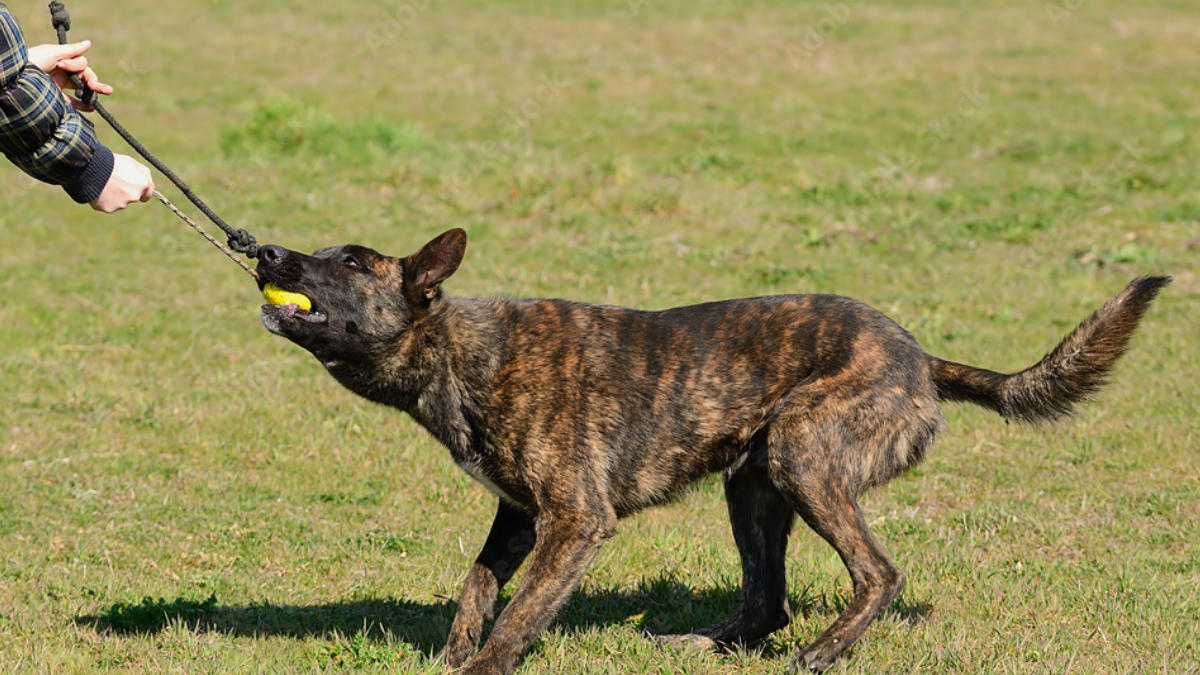
One of the first steps in training a Dutch Shepherd dog is to establish yourself as the pack leader. This breed is known for its strong personality and independent nature, so it is important to be confident and consistent in your training methods. Positive reinforcement techniques such as treats, praise, and playtime can be effective in motivating your dog to learn and obey commands.
When it comes to specific training exercises, obedience training is a great place to start. This includes basic commands such as sit, stay, come, and heel. Training sessions should be short and frequent, with plenty of breaks for play and exercise. With patience and consistency, your Dutch Shepherd dog can become a well-trained and loyal companion.
Understanding Dutch Shepherd Dogs
History and Origin
The Dutch Shepherd dog is a breed that originated in the Netherlands. They were bred to be versatile working dogs that could herd, guard, and protect their owners. Dutch Shepherds were first recognized as a distinct breed in 1898 and were initially used as working dogs on farms.
Physical Characteristics
Dutch Shepherds are muscular, medium-sized dogs that have almond-shaped eyes. They have a short, dense coat that can come in three different colors: brindle, fawn, and gray. The breed is known for its agility, speed, and endurance, which makes them excellent working dogs.
Temperament and Personality Traits
Dutch Shepherds are highly intelligent, loyal, and loving dogs. They are energetic and friendly, but also independent and smart. This breed requires a lot of attention and exercise to keep them happy and healthy. They are not recommended for first-time dog owners or people who cannot dedicate a lot of time to training and exercise.
In conclusion, understanding the history, physical characteristics, and temperament of the Dutch Shepherd dog is essential for anyone who wants to train and care for this breed. With their loyal and loving personality traits, high intelligence, and energetic nature, Dutch Shepherds make excellent working dogs and companions for the right owners.
Preparing for Training
Before starting to train a Dutch Shepherd dog, it is important to prepare for the process. This involves gathering the essential supplies, creating a training environment, and establishing a routine.

Essential Supplies
To effectively train a Dutch Shepherd, you will need some essential supplies. These include a collar, leash, treats, and toys. A collar and leash are necessary for controlling the dog during training sessions and walks. Treats are a great way to reward good behavior and encourage positive reinforcement. Toys can also be used as rewards and motivation during training.
Creating a Training Environment
Creating a training environment is crucial for effective training. The environment should be free of distractions and provide enough space for the dog to move around. A quiet room or backyard can be an ideal training environment. It is also important to remove any potential hazards that could harm the dog during training.
Establishing a Routine
Establishing a routine is essential for consistency and effective communication during training. The routine should include a set time and place for training sessions, as well as a specific training method. Positive reinforcement is a highly effective training method that involves rewarding good behavior with treats and praise. It is also important to communicate effectively with the dog using body language and clear verbal cues.
Overall, preparing for training a Dutch Shepherd requires gathering essential supplies, creating a distraction-free training environment, and establishing a consistent routine with effective communication and positive reinforcement. By following these steps, one can effectively train their Dutch Shepherd and establish a strong bond with their furry companion.
Basic Training Commands
Training a Dutch Shepherd dog requires a lot of patience, consistency, and positive reinforcement methods. Basic obedience training should start as early as possible, preferably when the puppy is between 8-16 weeks old. This section will cover some of the essential basic training commands that every Dutch Shepherd dog should learn.
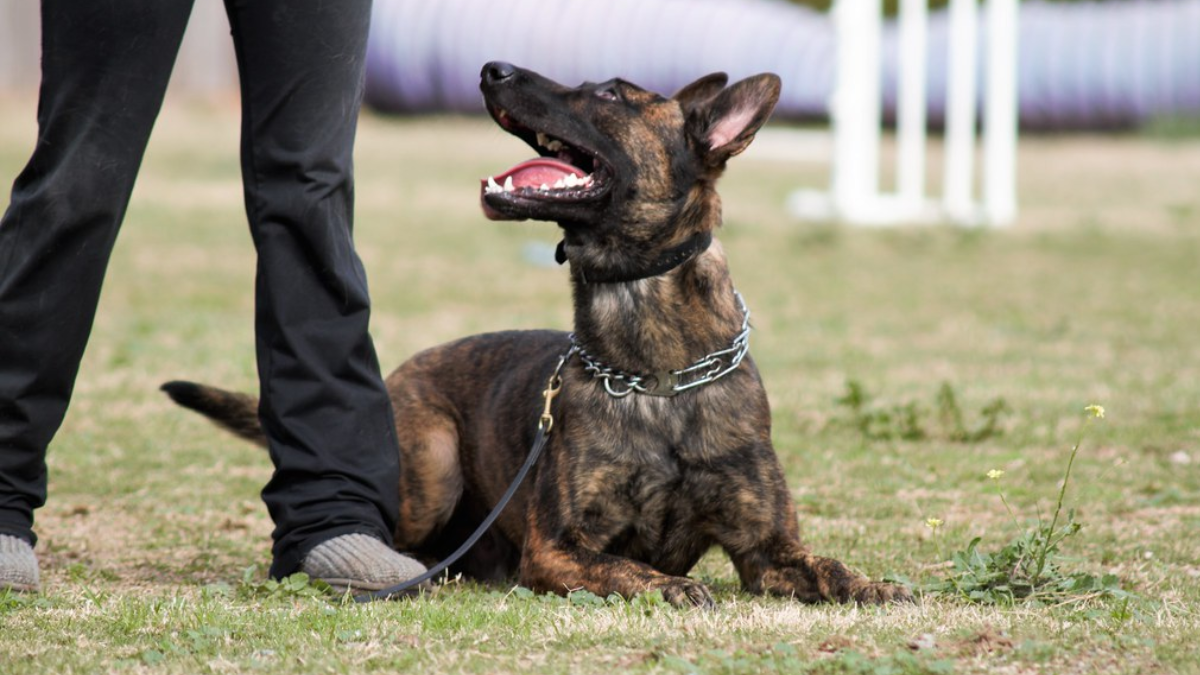
Sit, Stay, and Lie Down
The sit command is one of the most fundamental commands that every dog should learn. To teach your Dutch Shepherd dog to sit, hold a treat close to their nose and then move your hand up. As their head follows the treat, their bottom will naturally lower. Once they are in a sitting position, say "sit" and give them the treat.
The stay command is crucial for keeping your dog safe in potentially dangerous situations. To teach your Dutch Shepherd dog to stay, start by asking them to sit. Then, with an open palm, say "stay" and take a step back. If they stay in the sitting position, reward them with a treat. Gradually increase the distance and duration of the stay.
The lie-down command is another essential command that can be useful in many situations. To teach your Dutch Shepherd dog to lie down, start with the sit position. Then, hold a treat close to their nose and slowly move it to the ground. As their head follows the treat, their body will naturally lower to the ground. Once they are lying down, say "lie down" and give them the treat.
Come and Heel
The command is vital for calling your Dutch Shepherd dog back to you. To teach your dog to come, start by saying "come" in a happy tone of voice and then run away from them. When they catch up, reward them with a treat and lots of praise. Gradually increase the distance and reduce the treats until they come to you every time.
The heel command is useful for keeping your Dutch Shepherd dog close to you when you are walking. To teach your dog to heel, start by holding a treat close to your leg and saying "heel." Then, take a step forward, and if they stay close to your leg, reward them with a treat. Gradually increase the distance and reduce the treats until they walk beside you without treats.
Stand and Wait
The stand command is useful for grooming, vet visits, and other situations where your Dutch Shepherd dog needs to stand still. To teach your dog to stand, start by holding a treat close to their nose and then move your hand up. As their head follows the treat, their body will naturally stand up. Once they are standing, say "stand" and give them the treat.

The wait command is useful for keeping your Dutch Shepherd dog in one place for a short time. To teach your dog to wait, start by asking them to sit or lie down. Then, with an open palm, say "Wait" and take a step back. If they stay in the same position, reward them with a treat. Gradually increase the distance and duration of the wait.
In conclusion, teaching your Dutch Shepherd dog basic training commands is essential for their safety and well-being. By using positive reinforcement methods and consistency, you can train your dog to be obedient and well-behaved.
Advanced Training Techniques
Training a Dutch Shepherd dog requires patience, consistency, and dedication. Once the basic commands and tricks have been mastered, it's time to move onto more advanced training techniques. Here are some techniques that can help take your dog's training to the next level.
Agility and Obedience Competitions
Agility and obedience competitions are a great way to challenge your dog's physical and mental abilities. Agility competitions involve navigating through a series of obstacles, such as jumps, tunnels, and weave poles, while obedience competitions test your dog's ability to follow commands and perform tasks accurately and quickly.
To prepare for these competitions, it's important to teach your dog advanced obedience commands, such as "heel," "stay," and "come." You can also train your dog to perform specific agility obstacles, such as the A-frame or the teeter-totter.
Herding and Scent Tracking
Dutch Shepherds have a natural herding instinct, which can be harnessed through training. Herding training involves teaching your dog to control livestock, such as sheep or cows, by using commands and body language.
Scent tracking, on the other hand, involves teaching your dog to track down specific scents, such as those of a missing person or a lost item. This type of training can be useful for police dogs or search and rescue dogs.
Service and Protection Training
Dutch Shepherds are often used as service dogs for people with disabilities, as well as for protection purposes. Service training involves teaching your dog to perform specific tasks, such as opening doors or retrieving objects, to assist their owner.
Protection training involves teaching your dog to protect their owner from potential threats, such as intruders. This type of training should only be attempted by experienced trainers and should never be used for aggressive purposes.
Overall, advanced training techniques can help take your Dutch Shepherd's training to the next level. Whether you're preparing for competitions, harnessing their natural instincts, or training them for specific purposes, these techniques can help improve your dog's physical and mental abilities.
Exercise and Mental Stimulation
Dutch Shepherds are high-energy dogs that require plenty of exercise and mental stimulation to keep them happy and healthy. In this section, we'll go over some ways to ensure your Dutch Shepherd is getting the physical and mental exercise they need.
Daily Exercise Requirements
Dutch Shepherds require at least 60-90 minutes of exercise each day. This can include walks, runs, hikes, or any other physical activity that gets them moving. It's important to vary the type of exercise your Dutch Shepherd gets to keep them from getting bored. For example, you can take them for a walk one day, and go for a run or hike the next.
Interactive Play and Puzzle Toys
In addition to physical exercise, it's important to provide your Dutch Shepherd with mental stimulation. Interactive play and puzzle toys are great ways to do this. Puzzle toys can challenge your dog's problem-solving skills and keep them entertained for hours. Interactive play, such as playing fetch or tug-of-war, can also provide mental stimulation while also getting your dog moving.
Training as Exercise
Training your Dutch Shepherd can also be a great way to provide exercise and mental stimulation. Teaching your dog new commands and tricks can challenge their mind and help them burn off energy. Training can also help strengthen the bond between you and your dog.
Overall, it's important to provide your Dutch Shepherd with a consistent exercise routine that includes both physical exercise and mental stimulation. This will help keep them happy and healthy and prevent behavioral issues that can arise from boredom and lack of exercise.
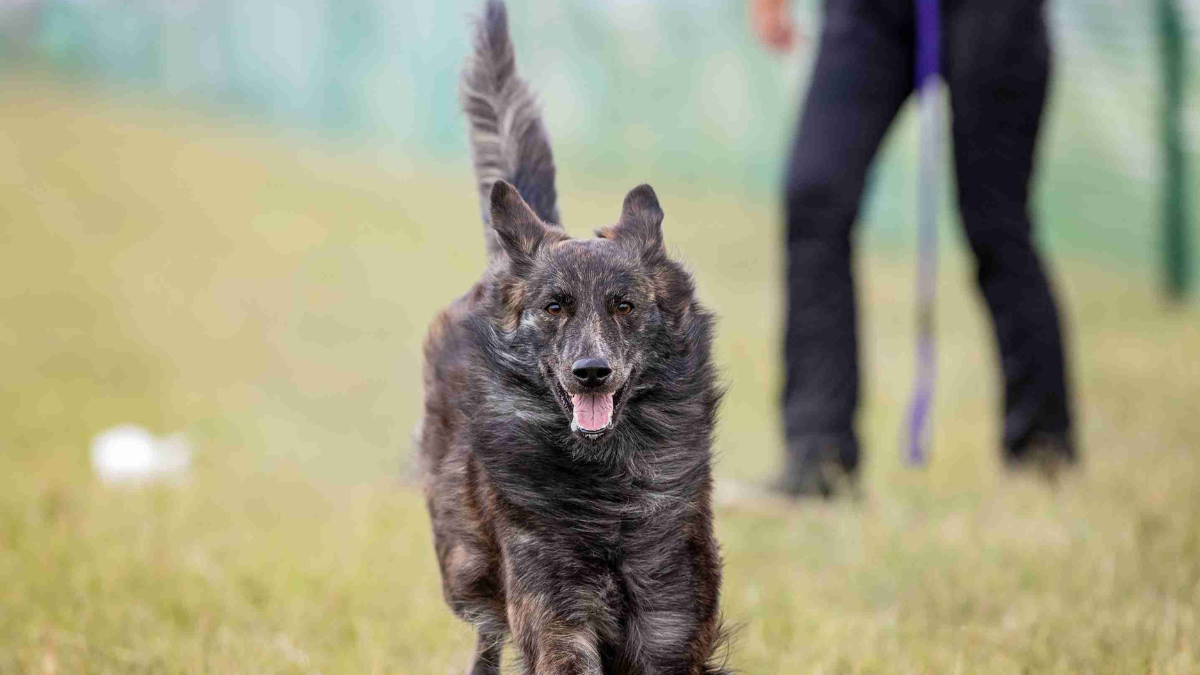
Health and Nutrition
Feeding Your Dutch Shepherd
Proper nutrition is essential for the health and well-being of your Dutch Shepherd. A balanced diet should consist of high-quality protein, healthy fats, and carbohydrates. It is recommended to feed your Dutch Shepherd a diet that is specifically formulated for their age, weight, and activity level.
It is important to avoid overfeeding your Dutch Shepherd as they can easily become overweight. Overweight dogs are at a higher risk of developing health problems such as joint issues, heart disease, and diabetes. Be sure to follow feeding guidelines and monitor your dog's weight regularly.
Common Health Concerns
Dutch Shepherds are generally a healthy breed, but like all dogs, they can develop certain health issues. Hip dysplasia and shoulder problems are common in Dutch Shepherds, so it is important to choose a reputable breeder who screens their breeding dogs for these conditions.
Other health concerns may include allergies, skin problems, and dental issues. Regular veterinary care can help prevent and address these issues before they become more serious.
Regular Veterinary Care
Regular veterinary care is important for the overall health and well-being of your Dutch Shepherd. Annual check-ups, vaccinations, and parasite prevention are essential. Your veterinarian can also guide proper nutrition, weight management, and exercise for your Dutch Shepherd.
In addition, it is important to schedule regular dental cleanings to prevent periodontal disease, which can lead to other health issues. By providing your Dutch Shepherd with regular veterinary care, you can help ensure a long and healthy life.
Socialization and Behavior
Importance of Early Socialization
Early socialization is crucial for Dutch Shepherd dogs to develop a happy and obedient temperament. Socialization involves exposing the dog to different environments, people, and animals during their early weeks of life. This helps them develop confidence and adaptability, which are essential traits for a well-rounded dog.
It is recommended to start socialization as early as possible, ideally between 3 to 14 weeks of age. This is the critical period when puppies are most receptive to new experiences. Socialization should be done in a positive and controlled manner, using rewards and praise to reinforce good behavior.
Dealing With Behavioral Problems
Dutch Shepherds are intelligent and active dogs that require plenty of mental and physical stimulation. Without proper training and exercise, they may develop behavioral problems such as aggression, separation anxiety, and destructive behavior.
To prevent and address these issues, it is essential to provide the dog with regular exercise and training. This includes daily walks, obedience training, and interactive play sessions. Consistency and positive reinforcement are key to shaping the dog's behavior and preventing unwanted habits from forming.

Fear and Anxiety Management
Dutch Shepherds may also be prone to fear and anxiety, especially in unfamiliar situations or when separated from their owners. To manage these issues, it is important to provide the dog with a safe and secure environment, as well as plenty of positive reinforcement.
Behavior modification techniques such as desensitization and counter-conditioning can also be used to help the dog overcome their fears. This involves gradually exposing the dog to the source of their anxiety in a controlled and positive manner while rewarding calm and relaxed behavior.
Overall, socialization and behavior training are essential for Dutch Shepherd dogs to develop into happy, well-adjusted pets. With proper training and care, these intelligent and active dogs can thrive in a variety of environments and make loyal companions for years to come.
Grooming and Maintenance
Coat and Shedding
The Dutch Shepherd's coat is short, dense, and weather-resistant. They come in three varieties: short-haired, long-haired, and rough-haired. The brindle pattern is the most common coat color. Grooming a Dutch Shepherd is relatively easy, with weekly brushing and occasional baths being sufficient. However, during shedding season, which occurs twice a year, daily brushing is recommended to keep shedding under control.
Bathing and Nail Care
Bathing a Dutch Shepherd should be done only when necessary, as frequent bathing can strip their coat of its natural oils. When bathing, use a mild dog shampoo and rinse thoroughly to avoid any residue. Nail care is important for Dutch Shepherds as well. Regular trimming is needed to prevent their nails from growing too long, which can cause discomfort and lead to other health issues. It is recommended to trim their nails every 3-4 weeks, or as needed.
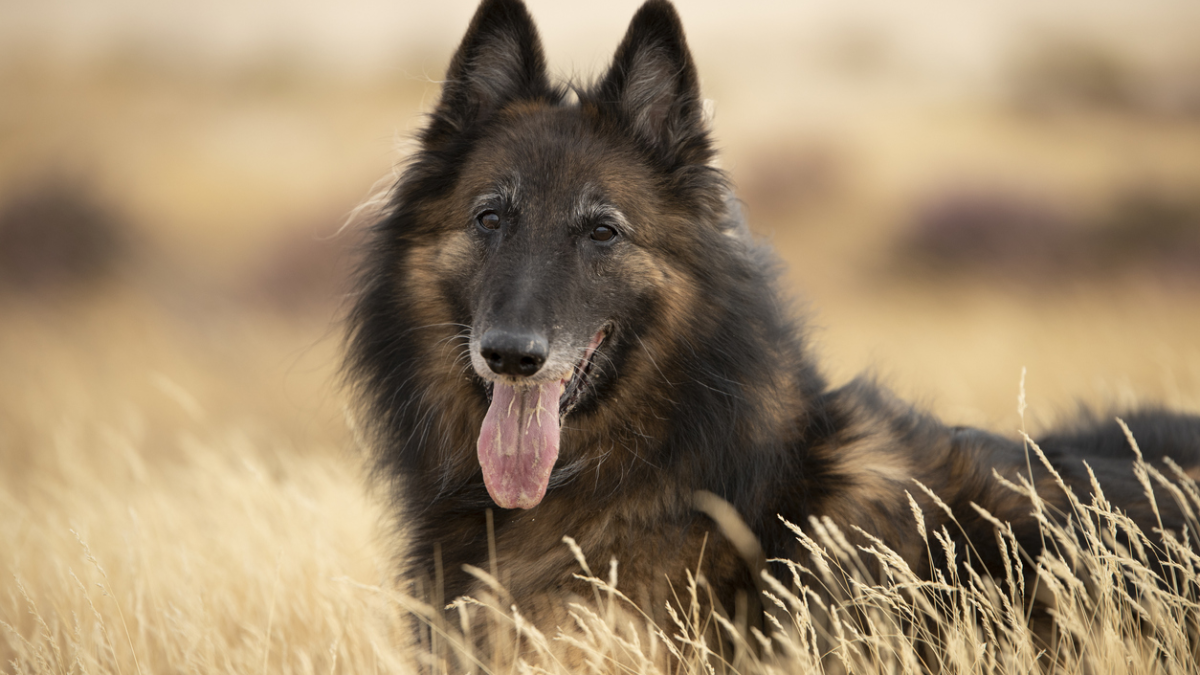
Overall, grooming and maintenance for a Dutch Shepherd is relatively low maintenance, but it is important to stay on top of shedding and nail care to keep them healthy and comfortable according to the breed standard.
Building a Strong Bond
Building a strong bond between a Dutch Shepherd and its owner is essential for successful training and a long-lasting relationship. This section will cover two important aspects of building a strong bond: trust and affection, and training as a bonding activity.
Trust and Affection
Trust and affection are the foundation of any strong bond between a dog and its owner. To build trust, it is important to be patient, consistent, and reliable. A Dutch Shepherd needs to know that its owner is dependable and can be counted on to provide for its needs. This includes providing food, water, exercise, and affection.
Affection is also important in building a strong bond. Dutch Shepherds are known for being affectionate and loyal dogs, and they thrive on human interaction. Regularly showing affection through petting, cuddling, and playing can help strengthen the bond between a dog and its owner.
Training as a Bonding Activity
Training is not only important for teaching a Dutch Shepherd basic obedience commands, but it can also serve as a bonding activity between the dog and its owner. Positive reinforcement training methods, such as rewarding good behavior with treats or praise, can help create a positive association with training sessions.
Shorter training sessions, rather than long and exhausting ones, can help keep the dog engaged and prevent boredom or frustration. Consistency is also key in training a Dutch Shepherd, as it helps build trust and reliability.
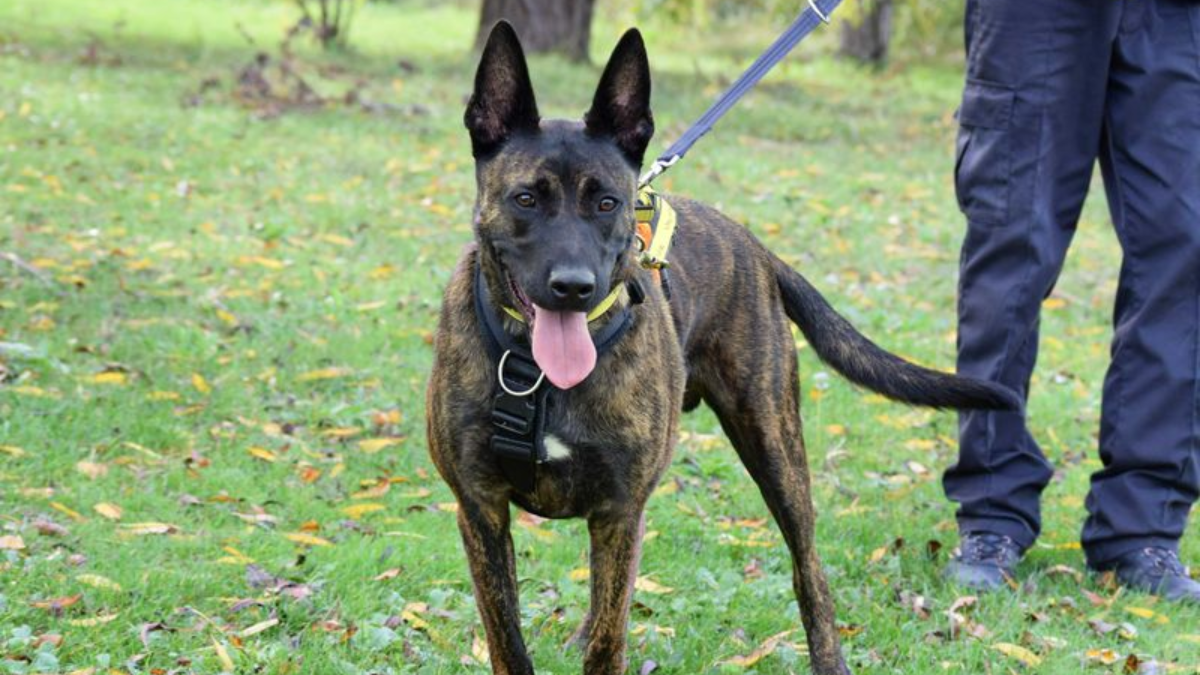
Training can also be a fun and versatile activity for both the dog and its owner. Incorporating games and activities, such as agility or scent work, can help keep training sessions interesting and enjoyable for both parties.
Overall, building a strong bond between a Dutch Shepherd and its owner takes time, patience, and effort. Through trust and affection, and training as a bonding activity, a strong and reliable relationship can be formed, leading to a successful and fulfilling life together.
Conclusion:
In conclusion, understanding How to train a Dutch Shepherd Dog? is essential for fostering a strong bond and ensuring a well-behaved companion. Dutch Shepherds are intelligent, energetic, and highly trainable, making them ideal candidates for various roles, including law enforcement, search and rescue, and family pets.
To effectively train a Dutch Shepherd, consistency, patience, and positive reinforcement are key. Establishing clear communication and providing mental stimulation and physical exercise is vital for channeling their energy into productive behaviors. Additionally, early socialization and obedience training lay the foundation for a well-rounded and well-behaved dog.
Seeking professional guidance or enrolling in obedience classes can also provide valuable support and guidance in training a Dutch Shepherd. Tailoring training methods to suit their temperament and learning style further enhances success in training.
By investing time, effort, and patience into training, owners can help their Dutch Shepherds reach their full potential and become well-adjusted, obedient, and happy companions. Ultimately, the journey of training a Dutch Shepherd is as rewarding as the results, fostering a deep bond and mutual understanding between owner and dog.
Frequently Asked Questions
- What are the best techniques for leash training a Dutch Shepherd?
- Leash training a Dutch Shepherd requires patience and consistency. The best technique is to start with short walks and gradually increase the distance. Use a sturdy leash and collar, and avoid retractable leashes. Reward your dog for walking calmly beside you and correct any pulling behavior.
- What types of work or activities are suitable for Dutch Shepherds?
- Dutch Shepherds excel in a variety of activities, including obedience, agility, tracking, and protection work. They also make great hiking and running partners. It's important to find activities that stimulate both their mind and body.
- What are the foundational commands to teach a Dutch Shepherd puppy?
- The foundational commands to teach a Dutch Shepherd puppy are sit, stay, come, heel, and down. These commands will form the basis of your dog's obedience training. Start with one command at a time and use positive reinforcement techniques.
- How can one effectively train a Dutch Shepherd for obedience?
- Effective obedience training requires consistency, patience, and positive reinforcement. Use clear and concise commands, reward good behavior, and correct any unwanted behavior immediately. It's also important to establish yourself as the pack leader and to be consistent with your training methods.
- What methods are effective for providing mental stimulation to a Dutch Shepherd?
- Dutch Shepherds are intelligent dogs that require mental stimulation to prevent boredom and destructive behavior. Some effective methods include puzzle toys, scent work, obedience training, and interactive play. It's important to provide your dog with a variety of activities to keep them mentally stimulated.
- How does the behavior of a Dutch Shepherd influence its training process?
- The behavior of a Dutch Shepherd can influence its training process. For example, a dog with a high prey drive may require more training to prevent chasing behavior. It's important to understand your dog's behavior and tailor your training methods accordingly. Consistency and positive reinforcement are key to a successful training process.




